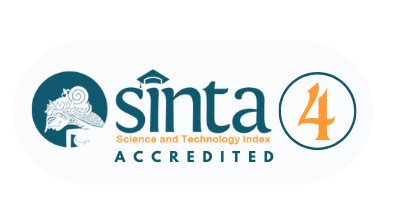Hoax Analysis on Social Media Corpus to Develop “Kapak Hoaks (Hoax Axe)” Model: A Study on Critical Discourse Analysis
DOI:
https://doi.org/10.33633/es.v3i01.4094Keywords:
corpus; hoax; linguistics; semiotics; social mediaAbstract
Abstract. In globalization era, hoax has been widely spread on social media and disturbs the well-built relationship of Indonesian people. Even it often breaks the unity of people. Lack of knowledge in how to identify hoax has let readers be hypnotized to believe that the news is real. This study is aimed to develop "KAPAK HOAKS (HOAX AXE)" model (Reader's independence in analyzing hoax content). This study uses the theory of CDA model of Fairclough by Umar Fauzan (2013). The study method used in this article is qualitative method with critical linguistics study approach. The authors of this study have collected analysis theories of critical literature able to be used to analyze data of hoax circulating on social media. The analysis is conducted by matching data corpus with the chosen theory. Through the analysis, the authors have identified language aspects supporting self-checking improvement. It is also mentioned by Eriyanto (2001) about hoax analysis. To reach perfection, this study considers that the future research needs to involve response test on social media readers' positive independence in responding hoax.Keywords: corpus, hoax, linguistics, semiotics, social mediaAbstrak. Di era globalisasi, hoax telah merajalela di media sosial dan mengganggu silaturahmi masyarakat Indonesia yang terjalin baik. Bahkan seringkali merusak persatuan umat. Kurangnya pengetahuan tentang bagaimana mengidentifikasi hoax membuat pembaca terhipnotis untuk percaya bahwa berita itu nyata. Penelitian ini bertujuan untuk mengembangkan model "KAPAK HOAKS (HOAX AX)" (Kemandirian Pembaca dalam menganalisis konten hoax). Penelitian ini menggunakan teori model CDA Fairclough menurut Fauzan (2013). Metode penelitian yang digunakan dalam artikel ini adalah metode kualitatif dengan pendekatan studi linguistik kritis. Penulis penelitian ini telah mengumpulkan teori analisis literatur kritis yang dapat digunakan untuk menganalisis data hoax yang beredar di media sosial. Analisis dilakukan dengan mencocokkan korpus data dengan teori yang dipilih. Melalui analisis, penulis telah mengidentifikasi aspek bahasa yang mendukung peningkatan pemeriksaan diri. Hal tersebut juga dikemukakan oleh Eriyanto (2001) tentang analisis hoax. Untuk mencapai kesempurnaan, penelitian ini memandang bahwa penelitian ke depan perlu melibatkan uji respon terhadap kemandirian positif pembaca media sosial dalam merespon hoax.Kata kunci: corpus, hoax, linguistics, semiotics, social mediaDownloads
Published
2020-09-29
Issue
Section
Articles






















